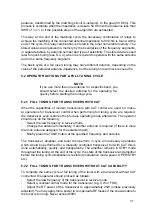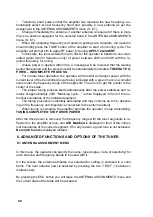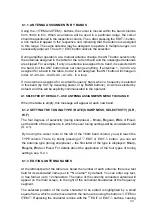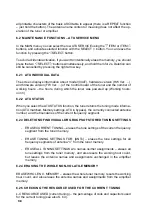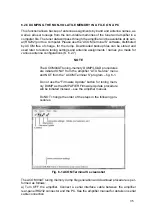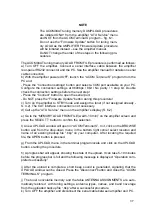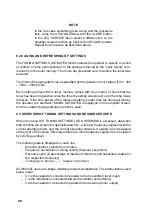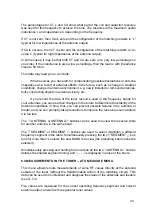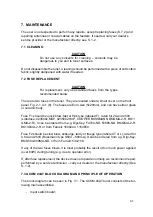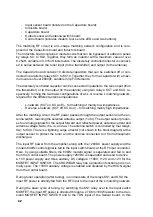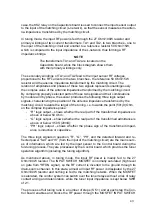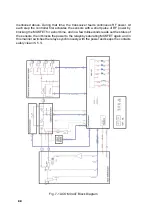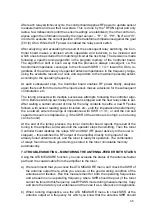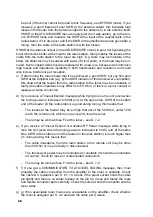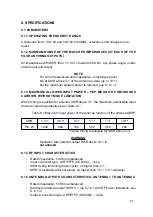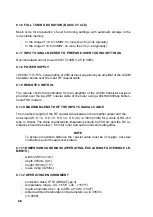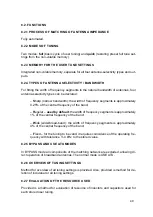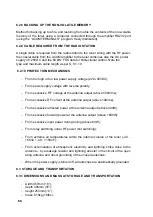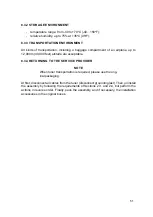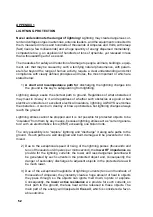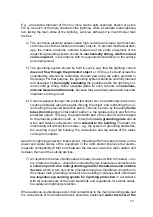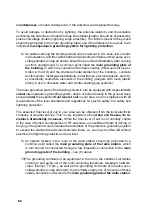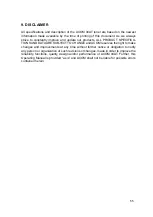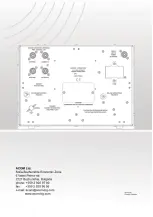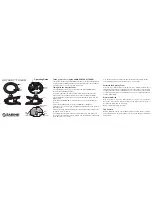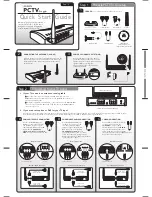
45
After each relay switchover cycle, the control board applies RF power to update sensor
measurements and read their new state. This is done by the *RFON signal and only
lasts a few milliseconds (until the sensor readings are stabilized); then the control an
-
alyzes again the information read by the input sensor – “R”, “G”, “PH”, “fwd” and “rfl”,
in order to evaluate the current position of the transformed impedance against the goal
(50+j0) Ohm. While the RF power is enabled the relays wont switch.
After analyzing and evaluating the result of the subsequent relay switching, the Con
-
troller board makes a decision which capacitors and inductors to be included and
which ones to be excluded from matching circuit at the next step. The decision is made
following a specific tuning algorithm in the program memory of the Controller board.
The algorithm is built in such a way that the process is always convergent, i.e. the
transformed impedance converges to the circle with SWR < 1.3:1 toward 50 Ohm, re-
gardless of the wide variety of expected antenna impedances in the frequency range,
using the available resource of coils and capacitors to the maximum possible extent,
according to the operating frequency.
At each subsequent step, the Controller board enables RF power briefly, analyzes
again the result from the data of the input sensor, makes a decision for the subsequent
commutation, etc.
The tuning proceeds with multiple successive attempts, following the controller algo-
rithm. Before switching each relay the power is stopped and the new relay state is set.
After waiting a certain amount of time for the relay contacts to settle, a new RF pulse
follows, with sensor reading power included, etc., until the impedance transformed by
the L-network enters the range of impedances with SWR < 1.3:1, or until the coil and
capacitor resource is depleted (e.g. if the SWR of the antenna is too high, so no tuning
can be found).
At the end of the tuning process, the tuner Controller board reports the result of the
tuning to the amplifier, and waits until the operator stops transmitting. Then the tuner
Controller board disables the relays KS1 and KS2 (RF power delivery to the tuner is
stopped) – this switches the RF output of the amplifier directly to the input of the
already tuned antenna circuit, and the tuner is ready for operation. The combination
of relays found to achieve good tuning is stored in the tuner nonvolatile memory
automatically.
7.4 TROUBLESHOOTING – MONITORING THE ANTENNA-FEEDER PATH STATUS
Using the ATU MEASURE function, you can evaluate the status of the antenna-feeder
path and the coaxial cable from the amplifier to the tuner.
a)
We recommend that you access the ATU MEASURE menu, and check the SWR of
the antenna output there, while you are sure of the good working condition of the
antennas and feeders. Run this measurement for both the operating frequencies
and at least one non-operating frequency, where SWR should be poor (if the tuner
cannot be tuned to this frequency, use BYPASS mode during measurements). Copy
and store the data for your antennas and then use it as a reference in diagnostics.
b) When running diagnostics, use the ATU MEASURE menu to check SWR at the
antenna output at a frequency for which you know that the antenna SWR should
Содержание ACOM 04AT
Страница 1: ...1 ...
Страница 57: ...2 2 ...

